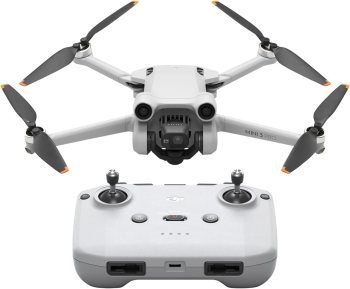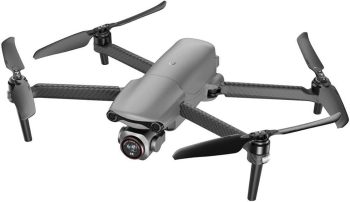- Portable and lightweight
- High-quality camera
- User-friendly features
- High-definition video
- Durable design
- Advanced safety features
- Limited obstacle avoidance
- Shorter flight time compared to larger drones
- Limited battery life
- Higher price point
DJI Mini 3 Pro vs Autel Robotics EVO Lite+
The world of quadcopters has witnessed significant advancements in recent years, with manufacturers continuously pushing the boundaries of innovation. Two notable models that have garnered attention are the DJI Mini 3 Pro and the Autel Robotics EVO Lite+. In this comparison, we'll delve into the features, capabilities, and differences between these two high-end quadcopters.
Design and Portability
The DJI Mini 3 Pro boasts a compact and lightweight design, weighing in at approximately 249 grams. Its foldable arms make it extremely portable, allowing users to easily stow it away in a backpack or purse. The Autel Robotics EVO Lite+, on the other hand, has a slightly larger and more robust build, tipping the scales at around 1179 grams. While not as compact as the Mini 3 Pro, the EVO Lite+ still features foldable arms, making it relatively easy to transport.
Camera Capabilities
Both quadcopters are equipped with high-quality cameras, but they differ in terms of specifications and features. The DJI Mini 3 Pro sports a 1/1.3-inch CMOS sensor, capable of capturing 48-megapixel photos and 4K video at up to 60fps. The Autel Robotics EVO Lite+, however, boasts a 1-inch CMOS sensor, which enables it to capture 50-megapixel photos and 5.3K video at up to 30fps. Additionally, the EVO Lite+ features a higher bitrate of 120 Mbps, resulting in more detailed and crisp footage.
Flight Performance
When it comes to flight performance, both quadcopters excel in their respective ways. The DJI Mini 3 Pro is incredibly agile and responsive, with a top speed of up to 47 mph (75.6 km/h) in Sport mode. Its advanced propulsion system and aerodynamic design enable smooth and stable flight, even in windy conditions. The Autel Robotics EVO Lite+, while not as speedy as the Mini 3 Pro, offers a more stable and cinematic flying experience, thanks to its larger size and more powerful motors.
Battery Life and Range
The DJI Mini 3 Pro has an estimated flight time of up to 34 minutes, depending on the mode and conditions. Its Intelligent Flight Battery ensures efficient power management, allowing for extended flight sessions. The Autel Robotics EVO Lite+, on the other hand, boasts a longer flight time of up to 40 minutes, thanks to its higher-capacity battery. In terms of range, both quadcopters offer impressive distances, with the Mini 3 Pro reaching up to 7.5 miles (12 km) and the EVO Lite+ covering up to 7.4 miles (11.9 km).
Obstacle Avoidance and Safety Features
Both quadcopters feature advanced obstacle avoidance systems, utilizing a combination of sensors and cameras to detect and navigate around obstacles. The DJI Mini 3 Pro employs its Advanced Pilot Assistance System (APAS) 4.0, which provides enhanced safety features like automatic braking and obstacle detection. The Autel Robotics EVO Lite+, meanwhile, utilizes its Dual Vision system, comprising binocular vision and a ToF sensor, to detect obstacles in real-time.
Price and Value
The DJI Mini 3 Pro is priced at around $999, making it an attractive option for those seeking a high-end quadcopter without breaking the bank. The Autel Robotics EVO Lite+, however, comes with a higher price tag of approximately $1,499, reflecting its more advanced features and capabilities.
Conclusion
In conclusion, both the DJI Mini 3 Pro and the Autel Robotics EVO Lite+ are exceptional quadcopters that cater to different needs and preferences. The Mini 3 Pro excels in terms of portability, agility, and affordability, making it an ideal choice for casual users and content creators. The EVO Lite+, on the other hand, offers a more premium experience with its advanced camera capabilities, stable flight performance, and longer battery life, making it suitable for professionals and serious enthusiasts. Ultimately, the decision between these two quadcopters will depend on your specific requirements and budget.

































